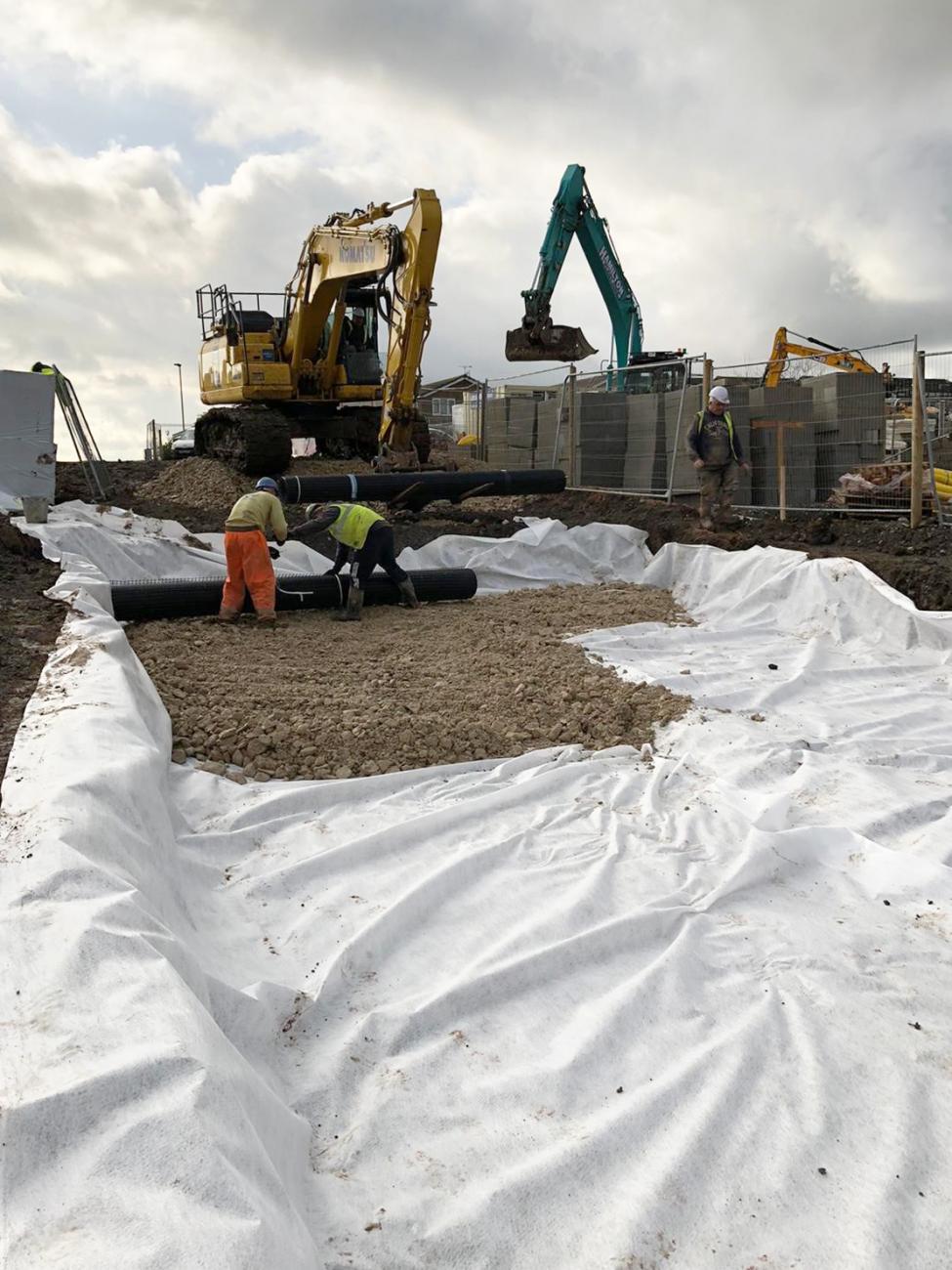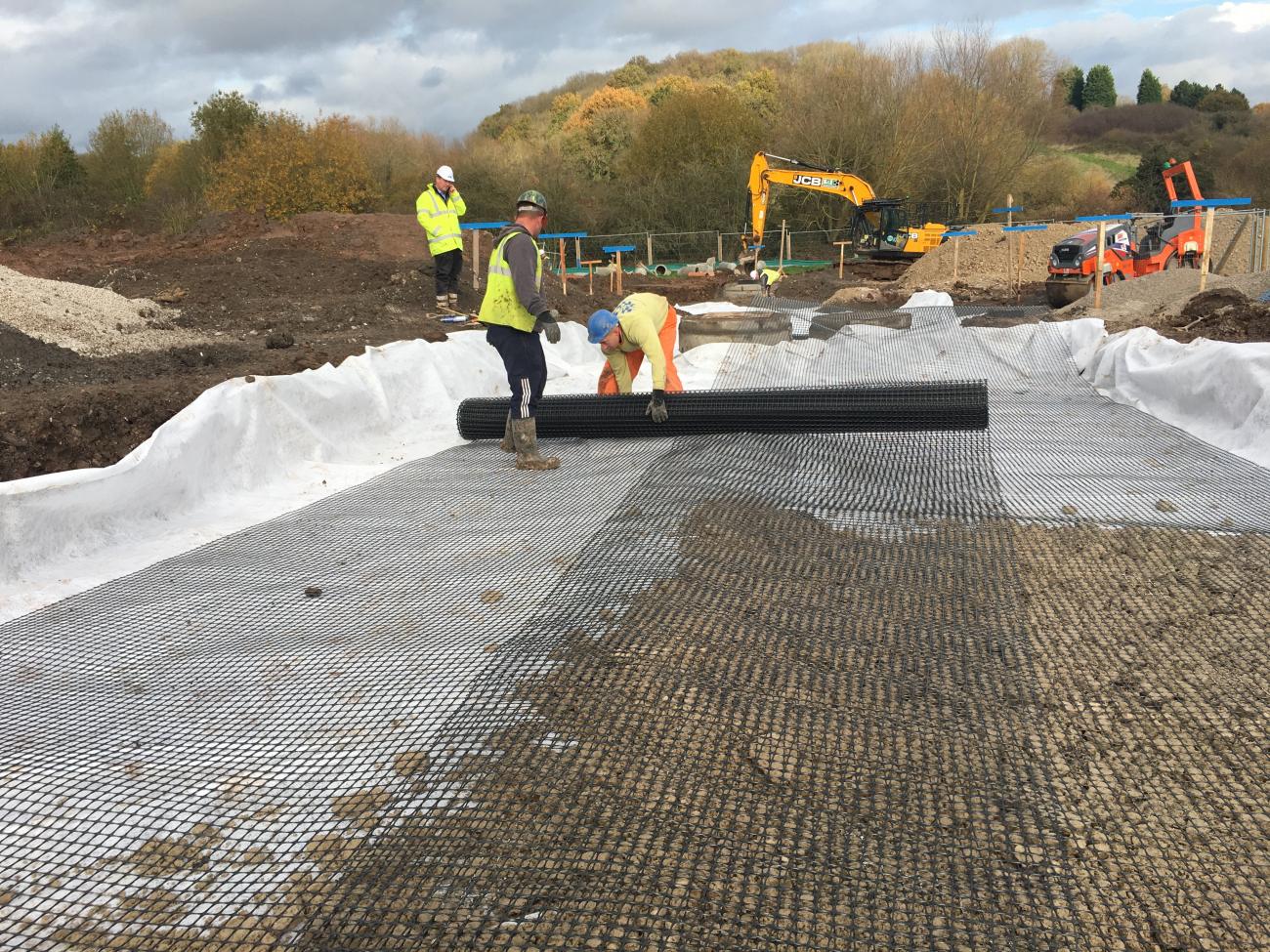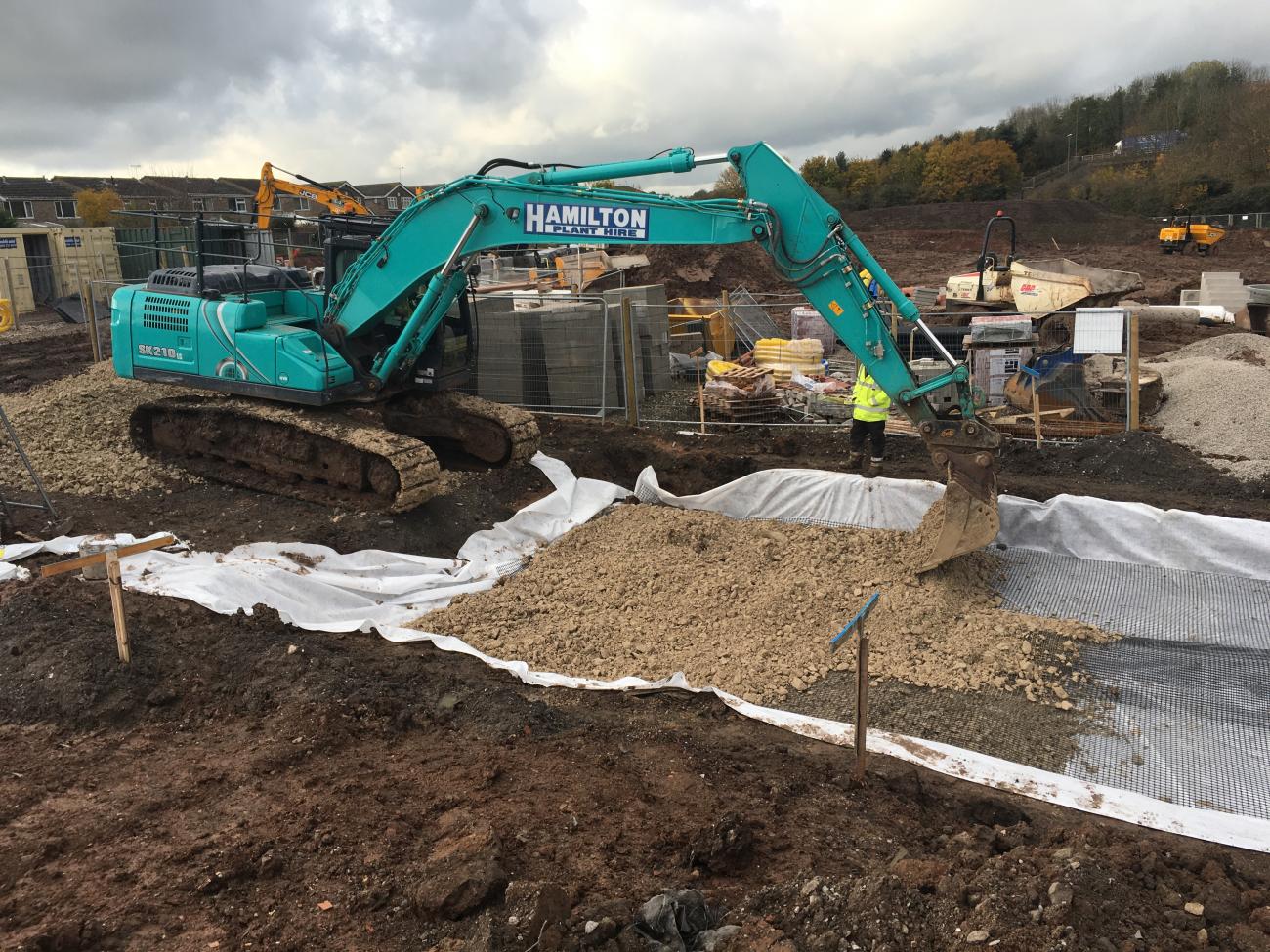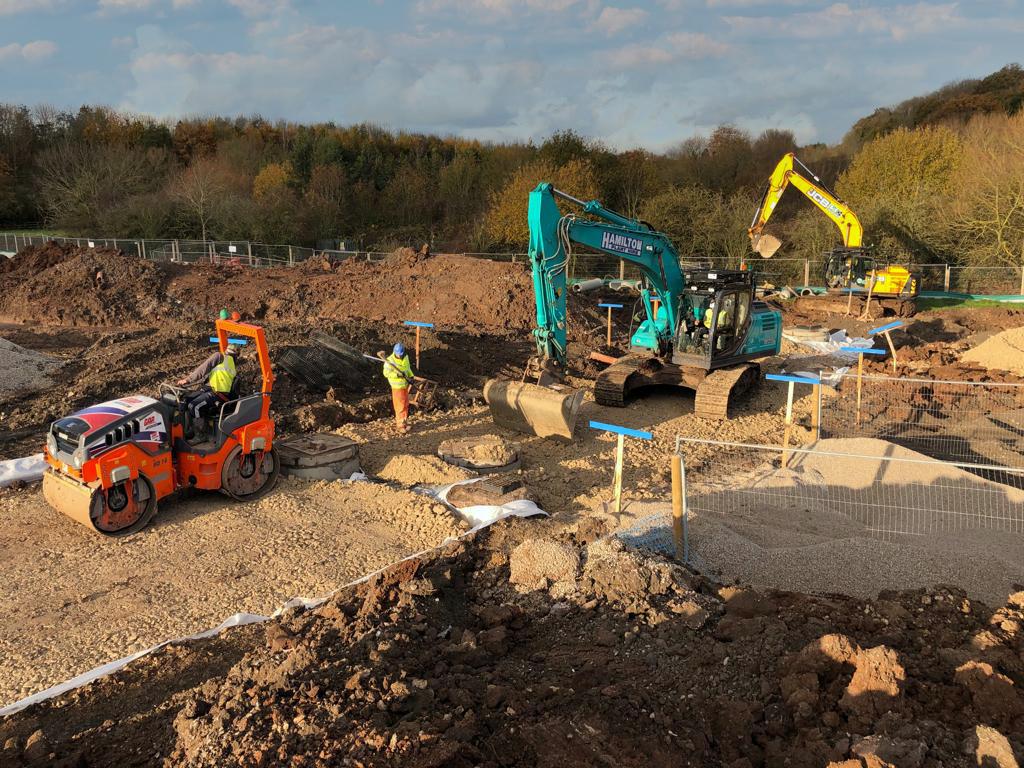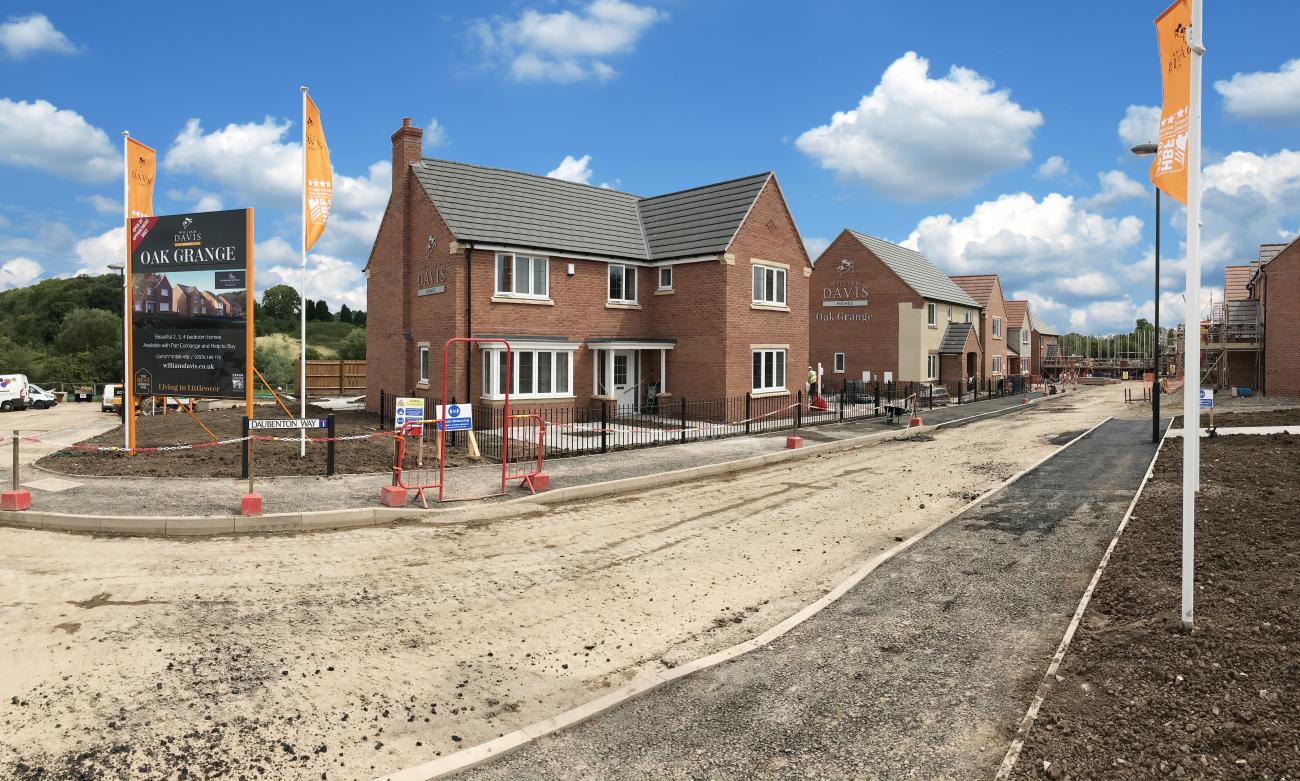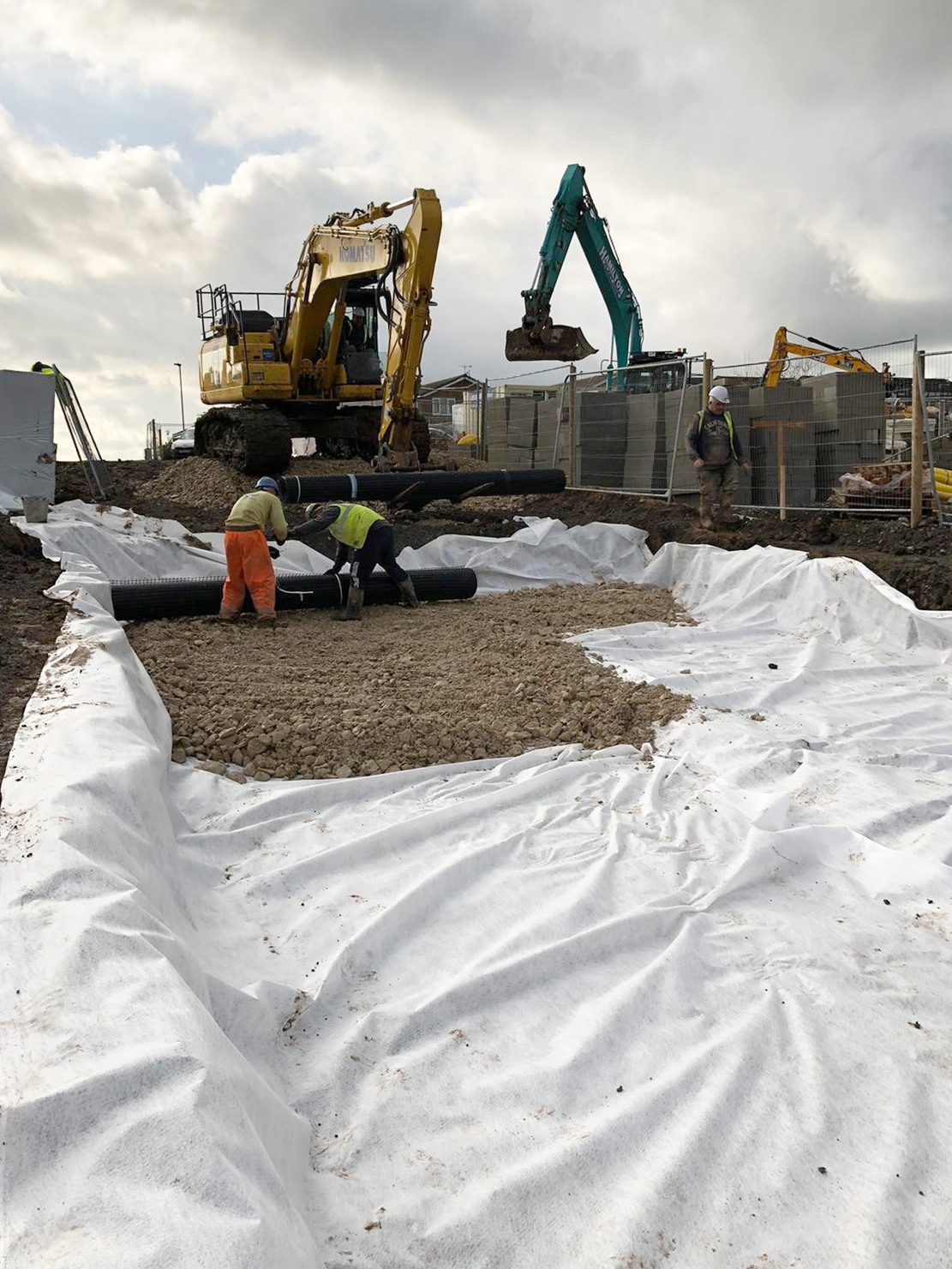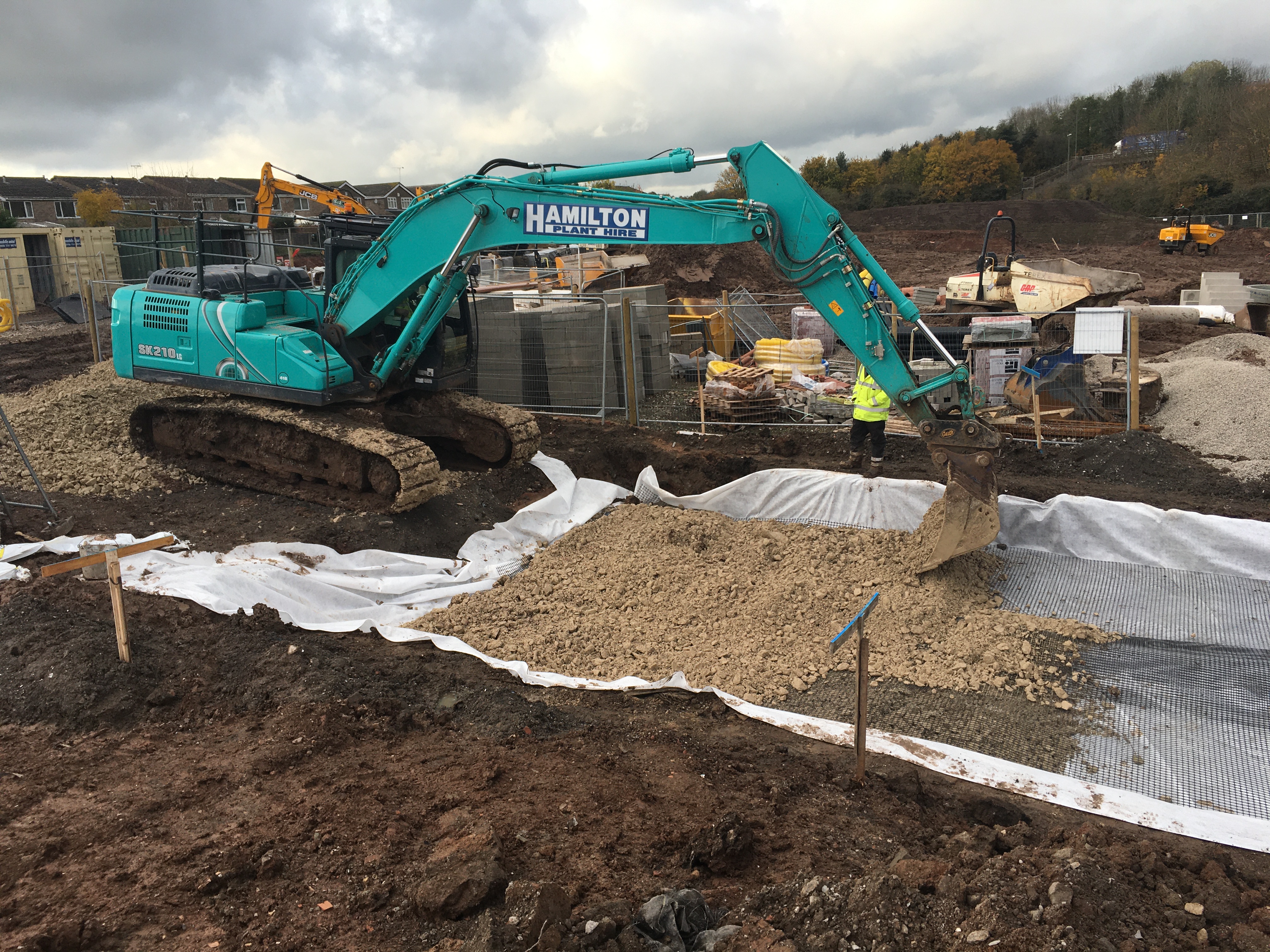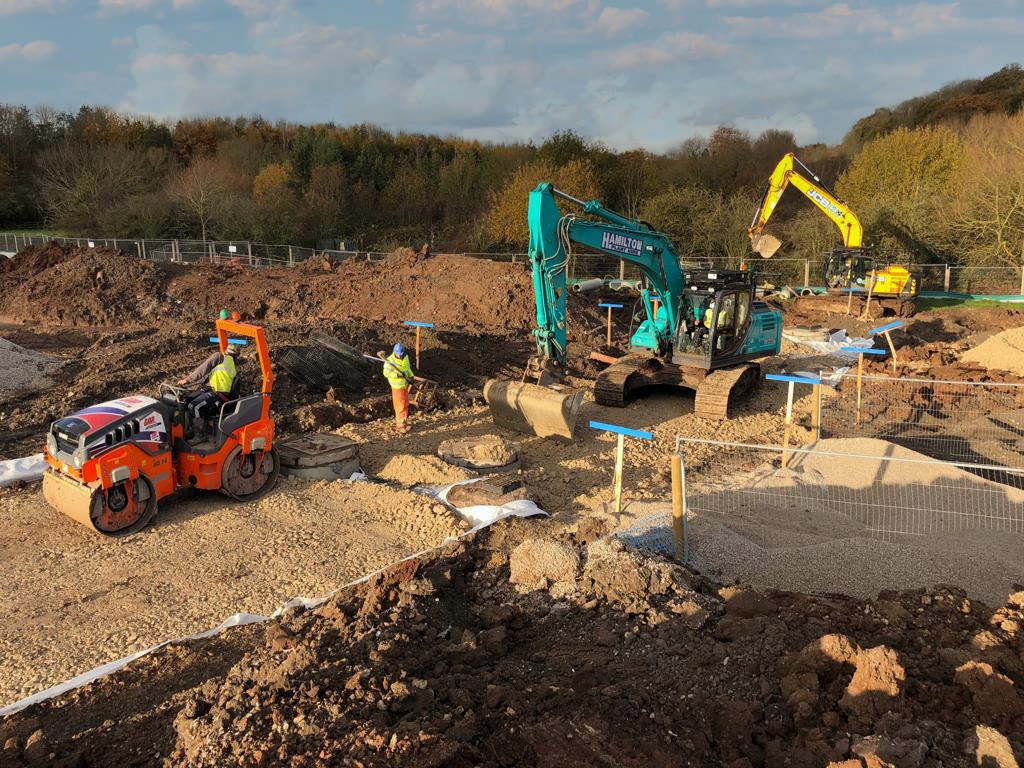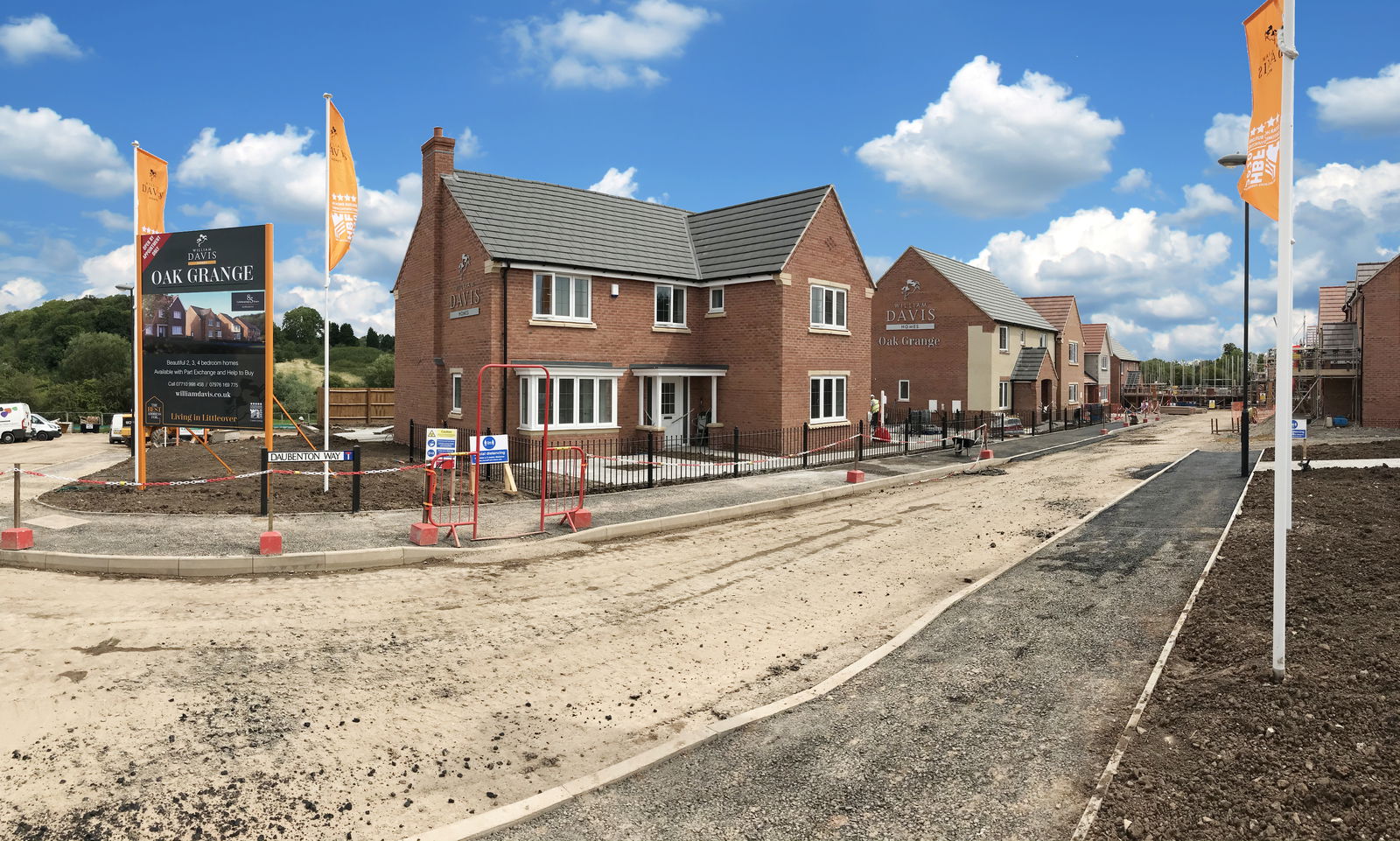
Value Engineered Road for Oak Grange housing development
Our geogrids team value-engineered a fit-for-purpose adoptable road for a new Derby housing development, working with the city council, William Davis Homes and S&L Groundworks. The team created an adoptable road solution for the new housing development Oak Grange. Derby City Council’s overseeing engineer had previously highlighted various issues surrounding the creation of a permanent adoptable road that needed to be resolved before the adoption could progress. Our team visited the site and identified that, before using a geogrid solution to significantly reduce the road foundation thickness, a performance trial was needed to prove efficacy for implementation. This was due to the very weak subgrade and the potential for differential movement. First, we cleared a 20-metre-long on-line area down to the sub-formation, with an additional ten metres at either end to allow for access and egress. An initial layer of MultiTrack™ MT1000 geotextile membrane provided separation of fines and filtration of water flow, which could have otherwise weakened the foundation over time. While the geotextile membrane provides effective separation and filtration, the subsequent geogrid layer(s) provide efficient stabilisation through robust reinforcement of the 6F5 aggregate (capping materials). 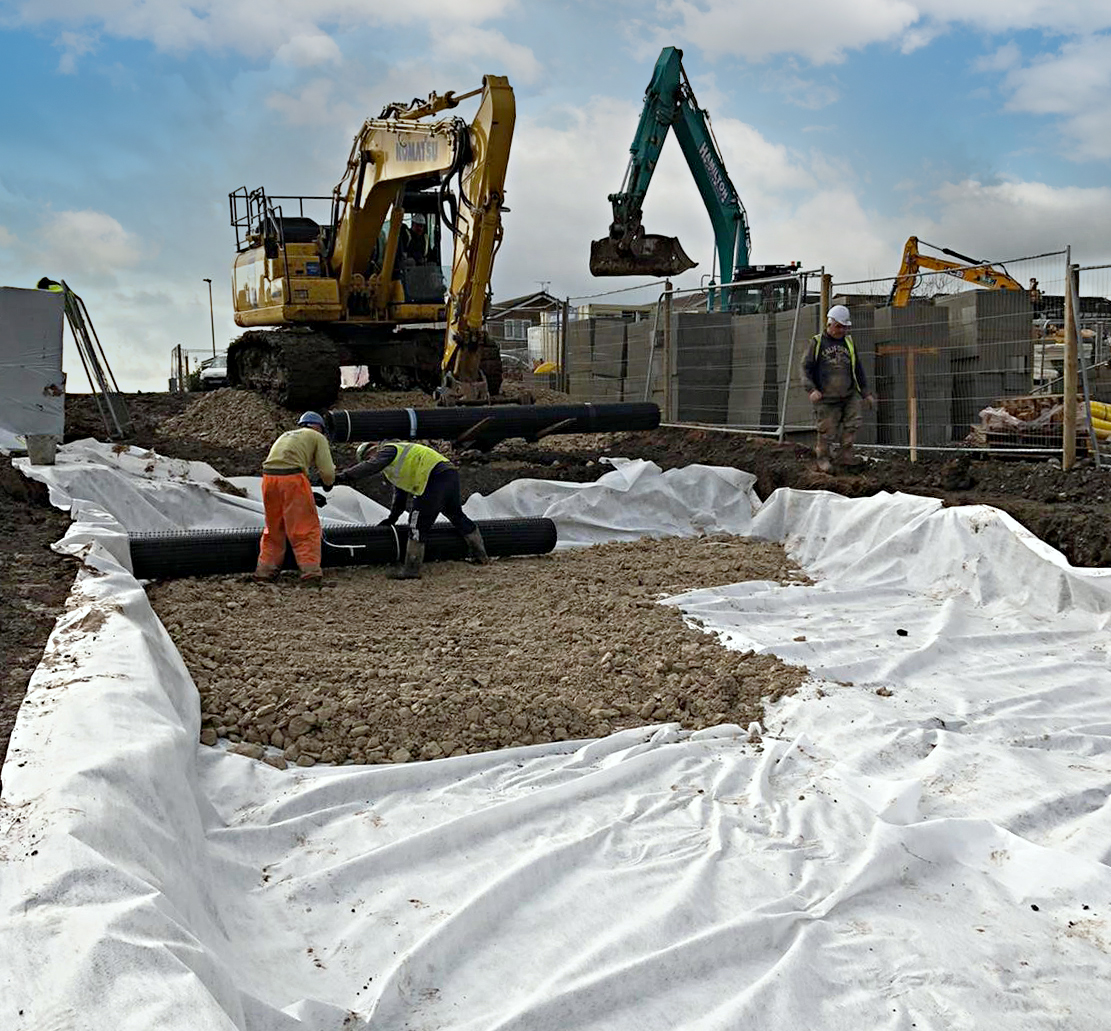
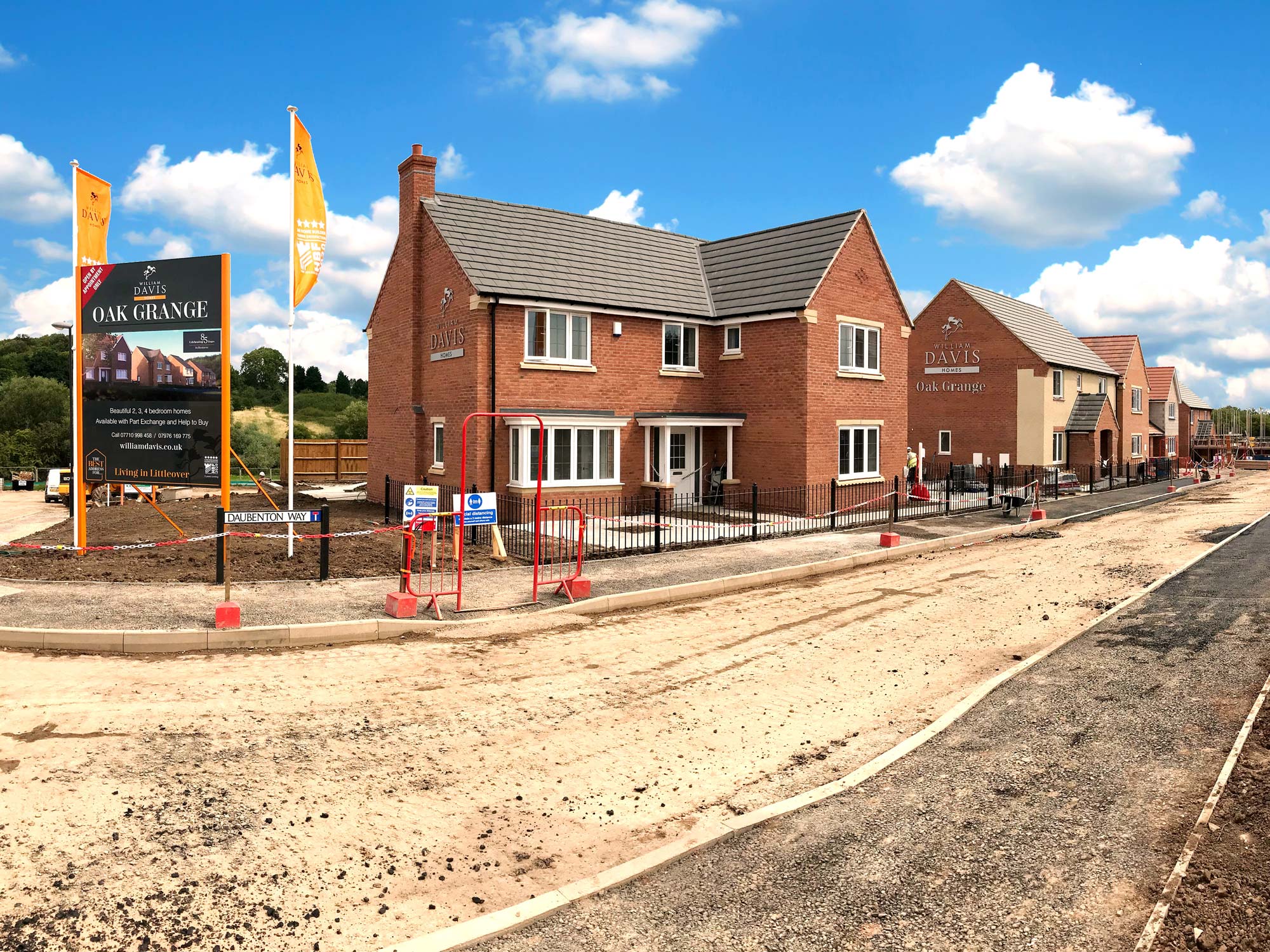
The first layer of E’GRID rigid biaxial geogrid was rolled out over the top of the MT1000. 250mm of 6F5 aggregate was placed and then compacted by a roller, followed by another layer of geogrid and a further 250mm of 6F5. The substantial half-metre reduction in foundation thickness over a conventional founding section reduced the total excavation and export of earthworks, therefore reducing the overall import and compaction of aggregates required. After the construction of the founding layers, plate bearing tests confirmed the in-situ performance at the formation level, on top of geogrid stabilised capping layers. Five plate bearing tests were taken on the inner 20 metres of the performance trial area, with the highest result being 47% and the lowest result being 18.7%. The performance trial area therefore exceeded the preliminary requirement of 15% at the formation level. A further granular sub-base layer was installed and tested, producing results between 70% and 100%, far exceeding the requirement of the pavement foundation. This confirmed that the geogrid solution and application were suitable for adoption to overcome the identified problems. Altogether, this project demonstrates how value engineering solutions such as geogrids can be used to solve general and site-specific issues for the housing sector, while simultaneously saving contractors time and money. |



